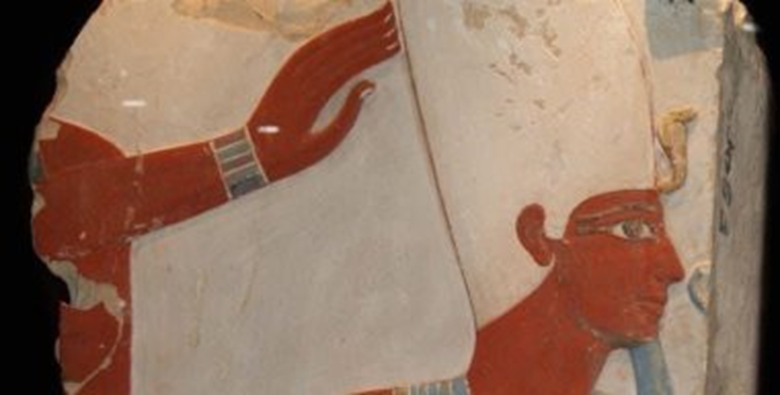Rare antiquities.. Learn about the inscription of King Tuthmosis III at the Hurghada Antiquities Museum

Inside the Hurghada Antiquities Museum , among the rare Pharaonic artifacts, there is an artifact made of colored limestone dating back to the 18th Dynasty - a modern state, and it is an inscription of King Thutmose III.
The soul depicts the Egyptian King Thutmose III wearing the white crown, the symbol of Upper Egypt, with his protective serpent on his forehead. He also wears a false beard held together by ribbons on either side of his face. A wide necklace decorated with yellow and blue stripes appears on his chest. The king also wears a kilt with a belt and a bull’s robe.
The inscription also shows a depiction of an idol behind the king, holding the king’s right arm from above and touching the king’s crown with his other hand. This idol wears large bracelets on his wrist.

For his part, Mina Makram, Undersecretary for Archaeological Affairs at the Hurghada Museum, said that King Thutmose III, or the descendant of Ra, is the sixth king of the Eighteenth Dynasty (18), and is considered the founder of the modern Egyptian Empire at that time. Some even call him the Father of Empires and the first emperor in history.
The Undersecretary for Archaeological Affairs added that this empire remained until about 1070 BC, until the reign of King Ramesses
Tuthmosis III built many temples in Thebes, one of them next to the Temple of Hatshepsut in Deir el-Bahari. He also built the sixth and seventh giant gates and the celebration hall in the Karnak Temple, completed the construction of the Temple of Habu, which Hatshepsut had begun, and established a temple to the god Ptah in his homeland in Memphis.
Thutmose III was one of the most powerful kings of Egypt throughout the ages, as he had a distinctive military mentality. In his campaigns, which amounted to approximately seventeen, he used new military tactics that helped him eliminate his opponents and helped him extend his influence and expand the Egyptian Empire at that time. These battles were the strongest, most famous, and most important. “The Battle of Megiddo recorded on the walls of the Karnak Temple.
Source : websites

